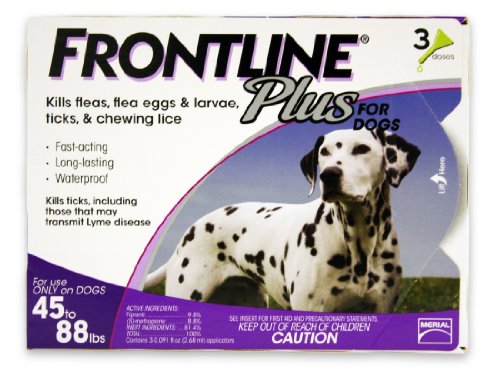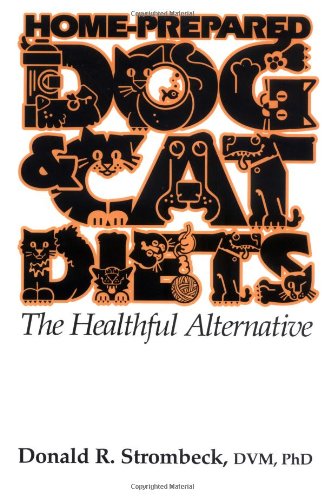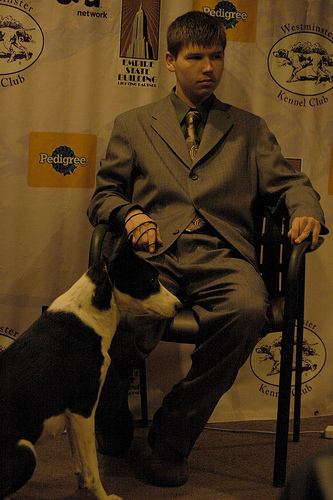

Although excellent progress has been made, canine distemper stays the greatest single disease menace to the world's dog population. It strikes mainly at young dogs, generally affecting those under one year of age. Among puppies the fatality rate from distemper often arrives at 80 percent. The disease also attacks unvaccinated older dogs. More than 50 percent of the adult dogs that get the disease die from it. And even when a dog does not die from the disease, its health might be impaired for good. Blindness in one or both eyes could result from discharges striking the cornea. The same discharges occasionally leave the dog deaf or not having a sense of smell. Permanent damage to the nervous system could cause chorea (muscle twitching), convulsions, partial or total paralysis.
Canine Distemper is induced by an airborne virus. It could be picked up by the dog that comes in contact with mucus and watery secretions from the eyes and noses of contaminated dogs, and likewise from contact with these dog's urine and fecal matter. A healthy dog can be infected without direct contact with the infected animal. Kennels, runs, bedding and actually, everything touched by a distemper-sick dog could spread the infection—even the hands, feet, and clothing of the person handling such a dog.
Symptoms of canine distemper come out in 4 to 10 days after exposure and include eye and nose discharges-at first watery, later thickened with pus, listlessness and loss of appetite, coughing, vomiting, fever, thirst, and diarrhea with black, foul-smelling stools. In late stages the virus often attacks the nervous system and there could be partial or total paralysis, and fits or twitching. At times the virus causes rapid growth of hard keratin cells on the footpads, leading to a hardened pad.
To prevent infecting others, a distemper patient must be isolated for at least 3 weeks following his recovery. If there's a case of distemper in your neighborhood, stay away from the house in which the sick dog resides and of every member of his family. Don't let them visit you! Keep in mind: they can bring the disease to your dog even when they leave their dog at home.
There's no drug that would cure distemper, although serums, antibiotics, and fluid therapy are helpful, especially against the secondary infections which oftentimes do the biggest damage. Good nursing is critical to bring a dog through. The patient must be isolated in warm, clean, dry, well-ventilated quarters. Feed simple foods in little amounts three or four times each day: cooked egg, beef broth, custard. Maintain the eyes and nose free of mucus. Flush out the eyes using sterile cotton dipped in boric-acid solution. Clear out the nostrils gently with a cotton swab, and apply Vaseline to prevent cracking.
Follow your vet's advice about medications. Most importantly, keep the patient quiet. His nerves are on edge, no door slamming, no sudden bright lights, no confusion, no loud talking. Dim the lights in his room, because his eyes are sensitive during the course of the disease.
Following recovery, burn all dog blankets, beds, and bedding that aren't too valuable to discard. Or, thoroughly disinfect everything the patient has utilized or been in contact with. If the dog dies, don't bring another puppy into the house for at least a month, and be sure to have him properly immunized.
Tips on Correcting Your Dog's Bad Habits
Puppy Paper Training and Housebreaking
How to Choose the Right Puppy
Tips on Preparing an Outdoor Dog Shelter
The Black Dog Syndrome and Pet Adoption Issues
Pet Steps and Pet Ramps For Your Cats and Dogs
 How to Relieve Your Pets Itching and Scratching
Unhealthy SkinA number of sk
How to Relieve Your Pets Itching and Scratching
Unhealthy SkinA number of sk
 My Dog Jumps Up On People
The doorbell rings and next
My Dog Jumps Up On People
The doorbell rings and next
 Do You Know Whats In Your Pet Food? Are You Sure?
Owners of dogs and cats who
Do You Know Whats In Your Pet Food? Are You Sure?
Owners of dogs and cats who
 3 Tips to Stop your Dog from Pulling on the Leash While Walking and Keep Your Arms in Their Sockets
If you find walking your dog
3 Tips to Stop your Dog from Pulling on the Leash While Walking and Keep Your Arms in Their Sockets
If you find walking your dog
 Junior Handler Shows Canaan Dog with Seizure Alert Skill - Westminster 2010
Junior Handler Shows Canaan Dog with Seizure Alert Skill
Junior Handler Shows Canaan Dog with Seizure Alert Skill - Westminster 2010
Junior Handler Shows Canaan Dog with Seizure Alert Skill
Copyright © 2005-2016 Pet Information All Rights Reserved
Contact us: www162date@outlook.com